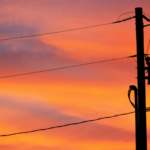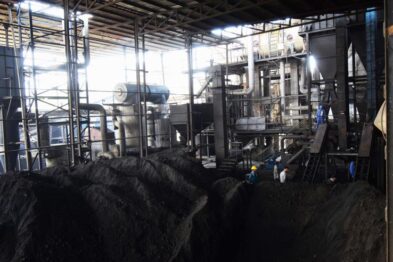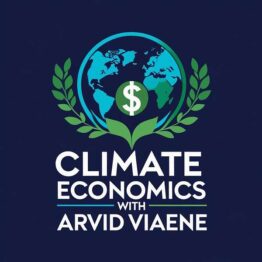The Energy Policy Institute at the University of Chicago (EPIC) and the Abdul Latif Jameel Poverty Action Lab (J-PAL), two of the world’s leading research and policy implementation organizations, have launched the Emissions Market Accelerator (EMA). The new initiative helps governments in the Global South design, build and implement cap-and-trade markets, cost-effectively reducing pollution to protect the environment and climate and improve human wellbeing.
The EMA is currently working with government partners in India to set up three cap-and-trade markets, and early-stage conversations with other Indian states and international jurisdictions are underway. This explosive demand for collaboration with the EMA comes following an experiment conducted by EMA affiliated researchers with the Indian state of Gujarat’s pollution control board. The pilot found that the world’s first cap-and-trade market for particulate pollution dramatically raised compliance with the law, sharply reduced pollution emissions, and increased industry profits. This win-win-win is not new for pollution markets. However, it served as an important proof-of-concept that they can work throughout the world. Before this pilot, pollution markets were seen as something that was almost exclusively a regulatory tool for the U.S., EU, and other rich countries.
It is natural to use pollution markets in countries where economic growth is an urgent priority and where much of the world’s pollution and greenhouse gas burden exists. Forty-nine of the top 50 countries with the most polluted air are located in the Global South. Further 82 percent of CO2 emissions over the remainder of the century are projected to occur there. Yet, many of these countries haven’t had the tools to address their environmental burden without compromising economic growth. Some, including India, have relied on command-and-control style regulatory approaches that are costly and difficult to enforce. By contrast, emissions markets are a flexible, transparent approach that allow for stronger compliance at lower cost.
“The Emissions Market Accelerator goes where pollution is threatening human wellbeing the most and brings governments the tools they need to simply and effectively balance the goals of economic growth and environmental quality. With a market, they don’t need to choose any longer, regardless of whether their interests are air, greenhouse gas, or water pollution. Our goal is for pollution markets to benefit 1 billion people by 2030,” says Michael Greenstone, co-chair of the Emissions Market Accelerator, director of EPIC, J-PAL board member, and the Milton Friedman Distinguished Service Professor at the University of Chicago.
What are emissions markets?
While most pollution rules focus on reducing emissions from a single point or smokestack, emissions markets turn this framing on its head by starting with an overall limit that collectively applies to all polluters. Regulators set a cap on total emissions across industrial plants, issue permits, and enable firms to buy and sell these allowances.
Plants that find it cheaper to cut pollution and meet their pollution standards can sell their extra permits to plants having trouble meeting the cap. Plants selling permits make higher profits than they would without the market because they make money from reducing their pollution. Plants buying permits spend less than they would on pollution control equipment. This flexible approach allows industries to continue to profit and economies to grow, all while reducing harmful pollution.
Can they work Worldwide?
Emissions markets aren’t new. They’ve proven to be effective in reducing pollution at a lower cost than traditional rules in countries around the world, including the United States, Europe and Canada. For example, in the United States, markets for sulfur dioxide reduced pollution by 40 percent between 1980 and 2003.
Yet, despite high pollution and a high concern for cost, there wasn’t any evidence that a market could work outside of these regions. Greenstone and his colleagues Rohini Pande and Nicholas Ryan from Yale University and Anant Sudarshan from the University of Warwick, in collaboration with EPIC and J-PAL, set out to test whether it would. The researchers—now the Emissions Market Accelerator Scientific Advisory Council—worked with the Indian state of Gujarat to pilot the world’s first Emissions Trading Scheme for particulate pollution in the industrial city of Surat. The pilot was conducted as an experiment, so the results from facilities participating in the market could be compared to a control group of facilities following existing, conventional air pollution rules. This rigorous approach enabled researchers to identify the causal impacts of the program.
Their study was published in a leading economics journal and found:
- Firms in the market reduced pollution by 20-30 percent more than those following the old rules.
- It cost industries in the market 11 percent less to comply, and their profits increased.
- The market reduced non-compliance from about a third of all plants at any point in time to less than 1 percent ever.
Overall, the market delivered a benefit-to-cost ratio of more than 200:1 by improving air quality, public health, and industrial efficiency.
An Environmentally-Friendly Economic Policy
Following the success of the pilot, the Gujarat government expanded the market to cover the control group of facilities. It also launched a second market in the city of Ahmedabad—Gujarat’s largest city and a major industrial hub. Today, 20 million people are breathing cleaner air in Gujarat due to these markets. Further, the Emissions Market Accelerator team is working with the Gujarat government to establish a sulfur dioxide trading market and a wastewater pollution market.
“Emissions markets are both innovative and practical, delivering a cleaner environment without hindering growth,” says Shri Devang M. Thaker, Member Secretary, Gujarat Pollution Control Board. “With our success, I hope other emerging economies worldwide will follow India’s lead.” Building on Gujarat’s momentum, the EMA team is now supporting a sulfur dioxide market in Maharashtra and is beginning to design a market in Rajasthan. Discussions are also underway to expand to several other Indian states, as well as internationally.
“Gujarat’s leadership in testing and scaling emissions markets shows how governments in emerging economies can drive large-scale solutions that benefit people, the economy, and the planet,” says Esther Duflo, Abdul Latif Jameel Professor of Poverty Alleviation and Development Economics at MIT, co-founder and director of J-PAL, and a 2019 Nobel laureate. “J-PAL is proud to have worked alongside the Gujarat government and EPIC for more than a decade to pilot, evaluate, and scale this innovative approach and now through the Emissions Market Accelerator expand it further across India and other countries.”
Bala Srinivasan, co-chair of the Emissions Market Accelerator, says, “Countries in the Global South have been laser focused on economic growth, as they should. But that has often come at the expense of environmental quality. We’re working with governments to implement a market approach that proves economic growth and environmental quality can go hand-in-hand.”














